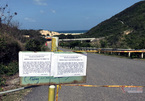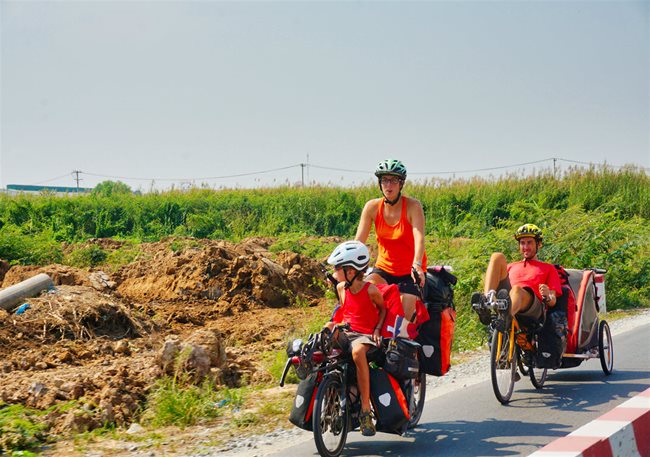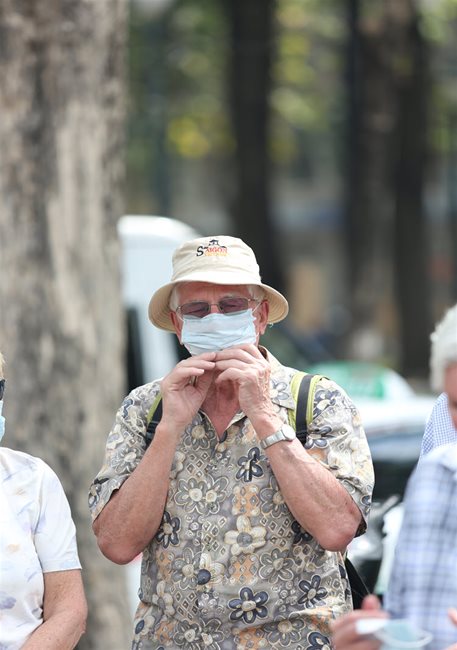|
They look forward to the reopening of borders and the resumption of international tourism that has been hit hard by the pandemic. Yet many things are still confusing.
A veteran tour guide with 10 years of experience in HCMC used to be slammed with guiding international and domestic tourists. What she earned was enough for the young mother to afford the rent and the spending on her two small kids. She was able to even save up to several million dong a month. Then came the pandemic and the tour guide was out of work at the start of the year. With no salary, her savings were not enough to support the family of three in the city. Although she had to cut some expenses, she struggled to make ends meet by selling Bodhi leaf paintings. “I am still looking for a new job,” she said. “Not many customers buy the paintings.” The tour guide is only one of the millions of employees in the tourism industry in Vietnam who have had to face the wrath of the Covid-19 pandemic. Since the second outbreak of the coronavirus, not only tour guides and unskilled and skilled workers but also managers have faced layoffs. Many have lamented of joblessness as they saw their livelihoods shattered.
Expectations of the resumption of international tourism Currently, full statistics of the number of workers in the tourism sector across the country who have lost their jobs since the second outbreak are not available. However, figures from some key tourist hubs may reveal the dire impacts of the pandemic. In HCMC, 90% of tourism workers are out of work without payment. Some tourist agencies reported losses worth hundreds of billions of dong during the first half of the year. Meanwhile, many big enterprises, despite paying workers the minimum wage for the past several months and cutting working time for all members, said they would sustain to October at most, according to the municipal Department of Tourism. “The market will continue to face difficulties towards the end of the year and worsen in the first and second quarters of the following year because borders may still be closed during the period, whereas growth on the domestic market is sluggish,” said Tran Trong Kien, chairman of Thien Minh Group. According to the data released by the General Statistics Office, in January 2020, the whole country welcomed over 1.99 million international visitors. Yet this figure dived to only 16,300 last month, down 98.9% over the same period last year. Cumulatively, during the first eight months, the number of international arrivals was only 3.8 million, down 66.6% over the year-earlier period. The battle against the pandemic has begun to show more positive signs. With news about vaccines for the SARS-CoV-2 virus to be commercially obtainable soon, some people have discussed a resumption of safe tourism. “There may be other waves of the pandemic,” a business person in the field said. “We should introduce scientific and positive measures for coexisting with the pandemic. If the business continues to shut down, all supports will be meaningless.” Although the reopening will require careful consideration from the Government that has to weigh pros and cons, strict prevention protocols and equipment capable of quickly and accurately detecting the virus would make the comeback of international tourists feasible, according to Ngo Minh Duc, chairman of HG Enterprise. On the World Tourism Organization (UNWTO) website, Secretary-General Zurab Pololikashvili has also called on governments to cooperate with one another to restart safe tourism. It said as the loss of the tourism industry has affected the lives of millions of people, it is necessary to resume tourism as soon as it becomes safe. As of the end of July, 87 destinations in the world have eased restrictions on international tourism. Of them, four destinations have completely removed all restrictions, and 83 destinations have retained some measures, such as partial closure of the border. Challenges at the starting line The reopening of international arrivals in Vietnam is apparently coming closer following the Prime Minister’s instructions for relevant ministries and agencies on the resumption of commercial flights between Vietnam and Japan, South Korea and some other safe places. The Prime Minister also assigned a similar task to the National Steering Committee for the Prevention and Control of Covid-19, ordering it to urgently study and propose the reopening of international commercial flights while fulfilling the dual goal of fighting the disease and taking prudent measures which do not disrupt economic activities. According to many entrepreneurs, although the reopening of international tourism offers hope for business recovery, policymakers need to be ready for a host of challenges. In particular, along with the difficulties in having to do both business and take preventive measures, enterprises are also confronted with issues on precarious human resources, changing consumer trends, weak purchasing power, and soaring fees. On the other hand, competitions between destinations will be fiercer because demands for tourists are high after a long hiatus. Take example, the cruise ship industry. Phan Xuan Anh, chairman of Viet Excursions Tourism Co., said Covid-19 has changed methods of operation. To limit infection, many cruise ships have used ventilation systems instead of closed compartments, in-room air conditioning systems instead of central refrigeration systems. At restaurants, although buffet diners are allowed to choose food, staff members pick it for them to limit contact. Restaurants seats must be distanced, the number of guests is fewer and open spaces must be prioritized. The number of available seats on vehicles are also smaller and carefully disinfected between trips. “New demands call for adaptation from operators at destinations,” said Anh. “New practices push costs up but charges cannot be raised.” He said his products are being made to be sent to his partners. Currently, passengers of some cruise lines have not canceled their reserved seats for trips at the beginning of next year, Anh added. However, purchasing power cannot be assessed due to the unpredictability of the pandemic. That most enterprises have stopped operation for a long time and a number of employees have stopped working or have moved to another job also proves to be a serious problem after the resumption of tourism activities. In particular, financial constraint will restrict new product research and marketing. The departure of employees will make recruitment costs soar and the search for skilled workers will be more challenging, affecting competitiveness. To mitigate the negative effects of the pandemic and resume international tourism, UNWTO Secretary-General Pololikashvili said it can be possible if public health protection is prioritized while enterprises and those have jobs that depend on the tourism industry are protected. Governments of many countries have applied many policies to support these two subjects, he said. Cambodia is a case in point, which has started training tourism staff. SGT |
||||
Dao Loan

Tourism industry needs support
The Ministry of Culture, Sports and Tourism has asked Prime Minister Nguyen Xuan Phuc for urgent support for tourism businesses impacted by the second wave of COVID-19.

Tourist firms seek loan-interest payment delay
The Ministry of Culture, Sports and Tourism (MCST) has proposed several urgent measures to the Prime Minister to support travel firms, including an extension on loan interest payments until December 2021.

